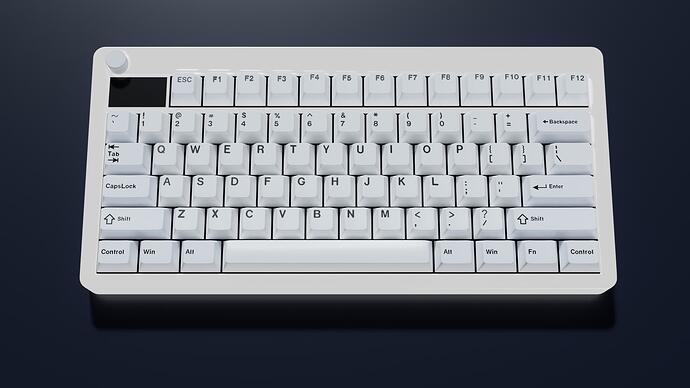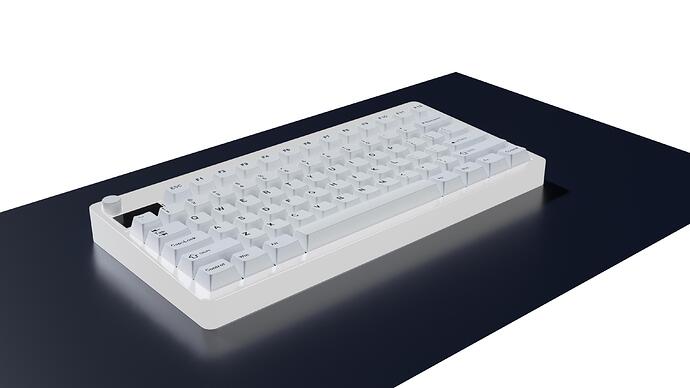Interest:
I have at least one friend who has been interested in a pre-made product like this for years, and has even purchased an early iteration in the form of the ASUS Claymore V1, only to be disappointed by its clunky connection, software, and build quality. He’s also considered the Everest Max, but so far hasn’t found enough value in the package to spring for it. I’ve also shown them the occasional interest-check for high-end custom approaches to the modular theme with full-aluminum cases and magnetic pogo-pin connectors, but the relatively high price of entry compared to other options they’d seen scared them off.
I think that users like my friend would be interested in this project as long as the magnetic connection were consistently strong and reliable (not weak or fiddly), if any software was easy to use or at least standardized (say, VIA), and if the modularity were truly smooth in-practice - and of course, if they found the price reasonable. More on that below.
Functionality:
I said it would be important for modularity to be truly smooth in-practice. That is, does each part need its own wire, or can they communicate to each-other to allow for only a single cable / bluetooth transmitter to be used at a time? (Likewise can each module work on its own?) I think that if this could be developed into a smooth and seamless experience it would go a long way. Part of the Claymore’s problem was A.) it’s super thick and chunky main cable and B.) its fiddly, awkward connectors that were simultaneously large and flimsy. If the modules actually talked to each-other either wirlessly or with some kind of magnetic pogo-pin setup, that would be preferable to each module just being their own separate device that simply sticks together physically.
Software / Plug-and-play:
Plug-and-play is both good and generally preferable - though the capacity for features like remapping and macros is probably important to many users who would consider a board system like this. I’m imagining programmers, IT professionals, or creatives who game in their free time. At my old job, I’d have loved to be able to pull a numpad out of my drawer and slap it onto the side of my 65% without using another cable or bluetooth connection, and to be able to pull it off and put it back in the drawer just as easily when I’m done entering strings of numbers.
Price:
Price I would expect to pay would really depend on the construction and features. I also think that people like my friend who would be shopping for an experience like this would be less concerned with luxury materials than with general reliability and ease of use. They’ll want a good looking keyboard that gives an impression of quality, but I don’t think it will need an all-metal construction or fancy materials like brass, milled polycarbonate, or carbon fiber. A robust and durable plastic shell would be fine, as long as it’s truly robust and durable.
The kinds of customers that I’d imagine would respond to this kind of modular setup will likely see the value in a premium product family, but may also be scared-away by traditional custom keyboard prices. Under $200 for a main / core alphanumeric module would be a must for customers like these, preferably under $150 to compete with products from companies like Logitech, Steelseries, ASUS, and Razer while offering more flexibility than they can. If you could get small modules like numpads around $50 (at least as addonds, maybe a little more on their own) I think that would be attractive, especially if they work both on their own and seamlessly with the modular system.
![]() Modular & Magnetic Design – Attach/detach numpad, arrow keys, and macro keys as needed.
Modular & Magnetic Design – Attach/detach numpad, arrow keys, and macro keys as needed.![]() Bluetooth & Wired Support – Works wirelessly or via USB-C.
Bluetooth & Wired Support – Works wirelessly or via USB-C.![]() Hot-Swappable Switches – Users can customize switches easily.
Hot-Swappable Switches – Users can customize switches easily.![]() RGB & Small OLED Screen – Shows battery, time, and volume (with a sliding volume control).
RGB & Small OLED Screen – Shows battery, time, and volume (with a sliding volume control).![]() Multi-Platform Support – Compatible with Windows, Mac, Linux, and gaming consoles.
Multi-Platform Support – Compatible with Windows, Mac, Linux, and gaming consoles.![]() Driver-Free Installation – Works out of the box without extra software.
Driver-Free Installation – Works out of the box without extra software.![]() Waterproof & Durable – Built to last and handle accidental spills.
Waterproof & Durable – Built to last and handle accidental spills.![]() Would you be interested in a modular keyboard like this? Why or why not?
Would you be interested in a modular keyboard like this? Why or why not?![]() What features do you like or dislike? Anything you’d change?
What features do you like or dislike? Anything you’d change?![]() What price range would you expect for something like this?
What price range would you expect for something like this?![]() Are there any deal-breakers that would stop you from buying it?
Are there any deal-breakers that would stop you from buying it?![]()

